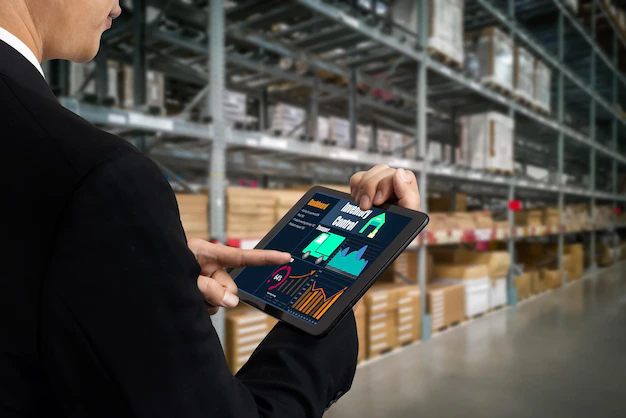Global trade inevitably comes with an overwhelming barrage of loose ends to tie up before legally exporting any good – let alone controlled goods. Organizations involved in global trade shoulder the responsibility of strict compliance with international trade laws under the added pressure to remain profitable. Is it possible?
Thankfully, yes, it is possible to balance compliance with profitability. Modern traders have increasing access to new strategies and technologies to help streamline complex export operations and promote profitability. What can your organization do to automate the export lifecycle? Let’s outline six game-changing ways to automate your export strategy. First, we’ll highlight a few key reasons to invest in these key export automations.
Table of Contents
Benefits of Export Automation
True, adopting new standard operating procedures and incorporating new software represents an investment of time and money. As a result, many organizations hesitate to make a digital transformation.
“Automating business processes can be likened to flossing. Even though there is plenty of data or evidence to prove its worth, some businesses are reluctant to commit to a new practice,” says the Sustainable Community Network.
Here are just a handful of compelling reasons to spring for automating your export processes:
- Increase profitability – Investing funds in automation can actually lead to saving time and money throughout the process, cutting back on inefficiencies and connecting you with the right partners.
- Stay compliant – Automating detail-sensitive processes, like screening and reporting, can help your organization avoid costly violations and maintain a creditable reputation.
- Boost efficiency – By saving on time-intensive manual data entry, automation will free up precious human resources to allocate toward more important tasks while boosting morale.
- Stay on the cutting edge. – Give your company a competitive edge by automating processes sooner than later. Streamlining your export workflows means you can seal deals more quickly and securely than ever. As a result, potential business partners will see you as a valuable, long-term force in your industry.
Your organization’s potential ROI from automating key export workflows is significant. What role can automation play in the export lifecycle?
6 Automation Options for Exporters
Many processes within the export lifecycle can benefit from automation. Which export functions can and should be automated to garner the benefits outlined above?
Here are just six export workflows every trader should consider automating:
1. Automated Export License & Permit Screening
Half the battle of export compliance is determining which export licenses and permits apply. Sorting out regulations across multiple countries can be time-consuming, stressful, and susceptible to human oversight.
Export management software can automate and accelerate the license and permit screening process. This automation allows you to quickly and easily determine if an exported good is controlled and which licenses are required when exporting to any given destination. In addition, you’ll have the convenience of instantly viewing details on license requirements from the controlling agency, possible license exceptions or exemptions, and any reporting requirements. This knowledge will equip you for maximum compliance and efficiency from the outset of the export lifecycle.
2. Automated Export License & Permit Acquisition
Determining which licenses are required is one thing – obtaining them is a whole other process. Applying for and finally acquiring export licenses and permits can be time-consuming and involve a lot of back and forth.
Using export software allows for real-time status monitoring, so there are no delays on your end. You can enable alerts to facilitate compliance reviews, increasing responsiveness and ultimately receiving needed licenses and permits faster. Export management software will enable you to manage and track all your licenses in one place for improved accessibility and organization.
3. Automated Product Classification
Product classification is an export workflow essential but subject to human error. Improper classification – or even incomplete record-keeping of the process – can jeopardize the entire export operation.
Automating the product classification process with export management software helps companies create an accurate, consistent, and legally defensible procedure. Configured automated classification can help you determine the global product classifications or ECCN numbers and save you from the legal and financial consequences of non-compliance.
4. Automated Denied Party Screening
Automated watchlist screening software allows corporations to check all individuals, businesses, and companies against a daily updated set of government and non-government lists. You can also perform real-time transaction screening and batch screening for optimal efficiency. Beyond that, you’ll have an auditable trail and the option to generate customizable reports in case authorities call a transaction into question.
5. Automated Technical Data Exports
International companies must be in-tune with modern data export laws since there are limits on what type of data and how much can be shared. Meeting international requirements for technical data sharing and maintaining thorough records is a formidable challenge.
Technical data exporting software can help establish a compliant SOP and consistent workflow for handling tech data exports. Managed File Transfer (MFT) capabilities (such as with https://www.goanywhere.
6. Automated Shipping Management
An especially challenging phase of the export lifecycle is organizing logistics and shipping. The challenges of the shipping process are further complicated by current global supply chain issues, extreme weather patterns, and other roadblocks.
Export shipping management software can automate the booking process with multiple carriers, allowing for secure and efficient booking and improved organization. In addition, using software solutions can help you compare real-time rates, provide easier access to corporate discounts, facilitate the shipment of special goods, allow for live tracking of the movement of your shipment, and much more.
How to Automate Your Export SOPs – Enterprise-Level Export Operations Software
Automating your export operations starts with investing in the best export operations management software. OCR Global Trade Management offers a full suite of powerful software solutions to automate workflows at all stages in the export lifecycle. Our scalable, web-based tools are designed to standardize your trade compliance approach and complement your SOPs while integrating with your current IT landscape.Ready to start automating? Get in touch for a product demo.
Also Read: How Digital Strategy Consultants Can Improve Your Digital Marketing Efforts.












